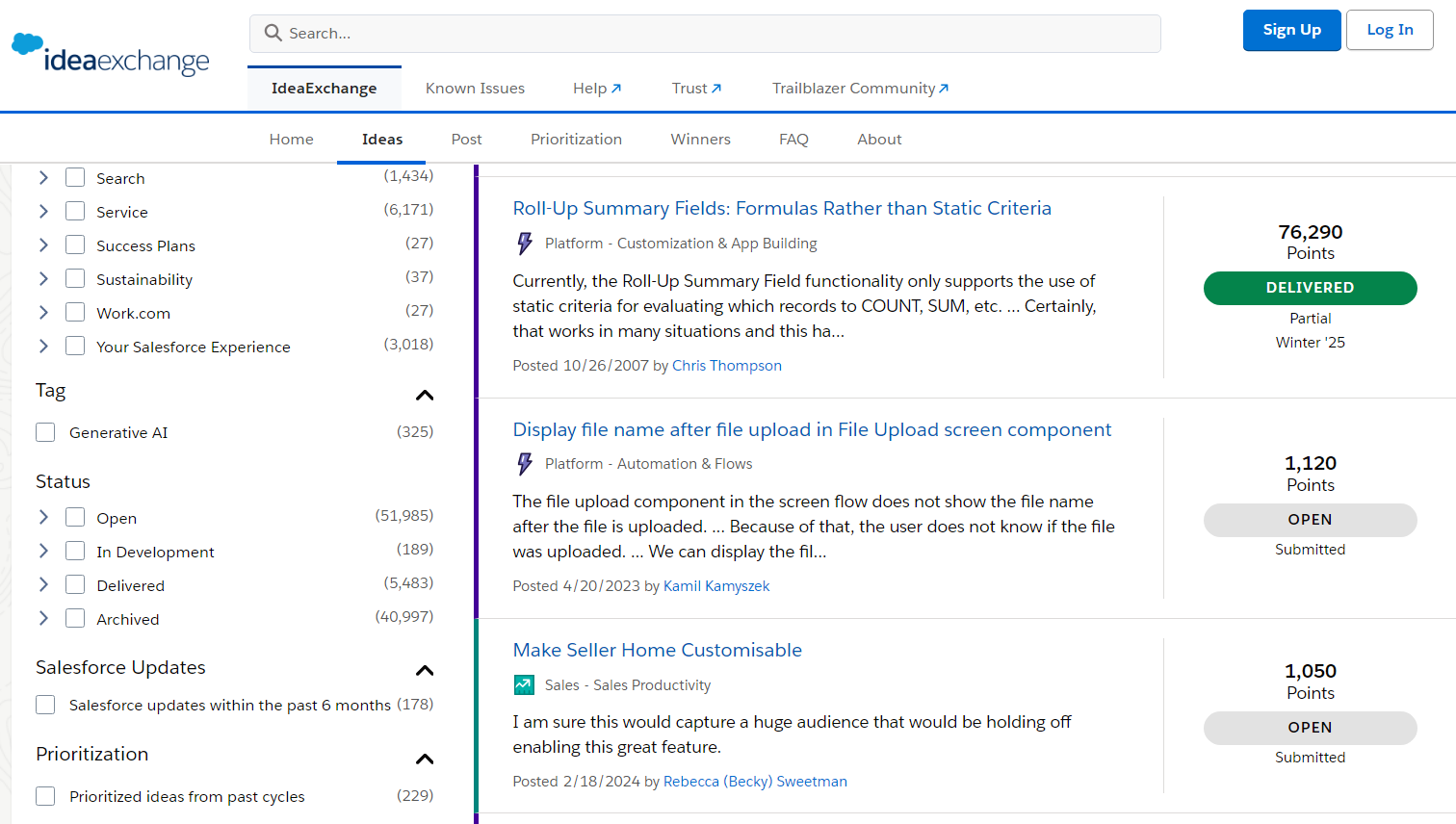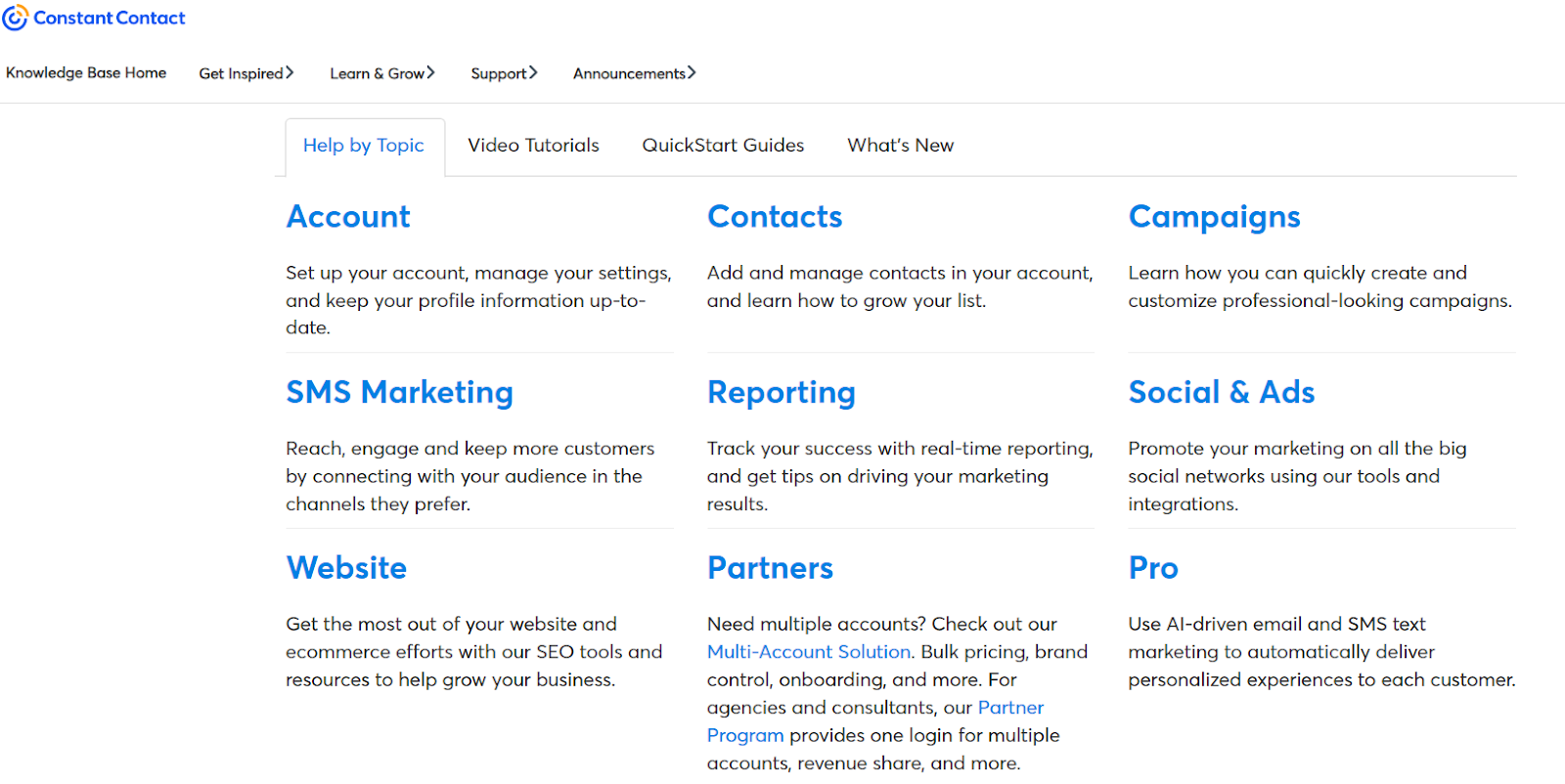Customers stop buying products and services from businesses for many reasons. They may have had a disappointing customer service experience or read negative reviews. Perhaps a competitor lured them with a better deal. Or maybe they just forgot about your brand—out of sight, out of mind.

The good news is you don’t have to stand by and watch your customers leave. Churn reduction strategies can help you keep existing clients and win back old ones. You can also use data analytics, partner programs, and other tools. These resources will help you understand customer behavior and improve retention.
Introduction to churn reduction
Churn reduction includes the strategies and tools used to prevent turnover. These measures focus on satisfying current customers instead of constantly recruiting new ones. Businesses use churn reduction to increase customer loyalty and encourage repeat sales.
What is churn in business?
Customer churn is the percentage of clients leaving your business within a set period. It’s also known as customer attrition or turnover rate. Companies use this metric to determine how many clients they lose and keep. It also helps them assess how this turnover affects their bottom line and growth.
Here are the average churn rates for popular industries:
- Finance/credit: 25%
- Cable: 25%
- General retail: 24%
- Online retail: 22%
- Telecom/wireless: 21%
- Travel: 18%
The adverse effects of customer churn
Of course, no one wants to lose a paying client. But the negative effects of customer churn go beyond lost revenue and may include:
- Decreased brand reputation
- Fewer customer referrals
- Negative word-of-mouth from dissatisfied clients
- Reduced employee morale
Repeat customers help you avoid these issues and increase profitability.
Analyzing the causes of customer churn
Many factors contribute to customer churn. Understanding the specific reasons why your company is losing clients is essential. This knowledge will help you identify areas of improvement and fix issues.
Common causes of customer turnover
Even the most successful businesses can experience customer churn. Here are eight common reasons why clients stop supporting companies:
- Confusing onboarding. Clients struggle to learn how to use your products or services.
- High pricing. Your competitors offer more competitive pricing, discounts, or other benefits.
- Ineffective marketing. Your promotional efforts don’t connect with or reach your audience.
- Lack of innovation. Your company doesn’t develop cutting-edge products and services.
- Low brand awareness. Clients forget your brand after they buy your products.
- No personalization. You create generic content that doesn’t fit your customers’ interests and needs.
- Poor customer service. Customers have a disappointing or negative interaction with a company representative.
- Poor quality products or services. Your offerings break easily or don’t meet client expectations.
Predicting customer churn with analytics
Use data analytics for churn reduction. Start by gathering relevant information, such as:
- Competitor pricing
- Customer satisfaction
- Email open rates
- Frequency of usage
- Purchase history
- Social media interactions
- Transaction record
- Website traffic
Analytics software can help you detect patterns in this data. For example, your website traffic could dip before your turnover rate increases. This knowledge allows you to predict future churn and take steps to prevent it.
Assessing customer feedback
Feedback can provide valuable insights into clients’ behavior and expectations. You can use this information to understand why you lose or keep customers.
There are many ways to gather feedback, including:
- Customer satisfaction surveys
- Email polls
- Focus groups
- Post-purchase surveys
- Product reviews
- Social media listening
Look for patterns in this feedback that may reveal larger issues or opportunities. For example, Salesforce created the IdeaExchange to allow users to recommend new features. Users can vote on their favorite ideas, and the product development team reviews them. This forum increases retention by giving customers a voice. It also helps Salesforce identify common problems experienced by users.

Like Salesforce, you can use customer feedback to improve your business continuously. Listening to clients shows you value their input, building loyalty and trust. These benefits will lead to lower churn rates.
Customer engagement strategies to reduce churn
Clients who feel valued and understood are more likely to develop brand loyalty. Here are the churn reduction strategies to engage customers.
Improve the onboarding process
No one wants to spend hours learning how to use a new product or service. Improve the customer experience by creating an easy and smooth onboarding process.
Focus on developing resources that will help clients achieve their goals quickly. For example, you can create short product assembly videos or how-to guides. Community forums and chatbots can also give customers instant support. These strategies engage customers and reduce frustration, leading to less churn.
Personalize customer engagement
About 88% of online shoppers say they’re more likely to keep shopping when companies personalize their experiences. Businesses can use many strategies to personalize customer engagement, including:
- Create custom landing pages for different demographics
- Develop location-based content and promotions
- Provide personalized product recommendations
- Respond to clients on social media
- Use personalized greetings and subject lines for marketing emails
Use predictive analytics to identify at-risk customers
Predictive analytics uses past behavior to forecast future actions. This process involves collecting data and using algorithms to spot trends. It can help you identify customers who may leave your company.
Here are a few potential signs of at-risk customers:
- Decreased engagement
- Expired subscriptions
- Less frequent orders
- Negative feedback
Focus your churn reduction efforts on at-risk audiences to improve customer retention. For instance, you could use social media marketing to engage younger clients.
Use incentive and reward programs to drive loyalty
The average American belongs to 16 loyalty programs. You can improve retention by developing a program with valuable rewards. For example, customers could receive exclusive discounts and anniversary gifts.
Gamification can also boost customer engagement and retention. Recognize top customers with badges or leaderboards. These experiences can excite clients and make them feel valued.
Referral and advocate programs are another way to decrease churn. Offer incentives to customers who recommend new clients or promote your brand online. For instance, you could give clients gift cards for every new referral. These programs increase loyalty and foster long-term relationships.
Improve products and user experience
Customers want high-quality products and services. If one brand doesn’t meet their expectations, they may turn to competitors. Follow these strategies to satisfy and retain customers.
Follow UX design best practices
User experience (UX) design focuses on making products effective and easy to use. This discipline also aims to accommodate people with disabilities. UX best practices refer to but are not limited to:
- Including alt-text for images and videos
- Keeping colors, font, and other visual elements consistent
- Minimizing loading times
- Speaking directly to the client
- Using plain language
- Testing your products with real customers
Creating accessible and pleasant designs will help you increase retention. UX design also boosts customer satisfaction and improves your reputation.
Create feature adoption and customer education plans
Many companies update their products and services regularly. Share these changes with customers by developing education plans.
Let’s say you add new features to your mobile app. You can help users learn about these improvements by sending them in-app messages. Interactive walkthroughs and video tutorials can also showcase changes. These resources will help customers get the most out of your products and use them confidently.
Prioritize reliability and continuous improvement
Don’t get complacent once you’ve released your product or service. Take steps to maintain a high-quality and reliable experience. For example, you may need to update your software to fix bugs and increase usability.
You should also look for opportunities to improve your designs based on customer feedback. Add new features that address client needs and improve the UX design. You can also create new training materials that cover advanced functions. These small steps will help you optimize the churn rate and boost satisfaction.
Provide top-notch customer communication and support
In 2020, 40% of customers stopped doing business with a company due to poor customer service. Offer quality support to optimize customer churn reduction.
Develop a reactive and proactive communication strategy
Every business needs two types of communication strategies: reactive and proactive.
Reactive tactics focus on addressing customer complaints or questions. These strategies include responding to product reviews and client emails. They also involve offering refunds or product exchanges for unhappy customers.
Proactive techniques anticipate customer concerns. For example, you can email customers a how-to guide after they buy your product. You should also address issues with honesty and transparency. If you sell customers a faulty product, issue a recall to make it right.
Combining reactive and proactive strategies shows customers you care about their experience and satisfaction. In turn, they’ll grow more loyal to your brand.
Improve customer support channels
Technology can make your existing customer support channels faster and more personalized. Artificial intelligence (AI) is one of the most popular and convenient advancements. AI-powered chatbots can answer customer questions 24/7. Companies can also use AI software to translate customer support into multiple languages.
In addition, automated workflows improve customer service. For example, you can automatically send customers post-purchase surveys. These tools reduce churn by helping customers get the support they need.
Build a knowledge base and community
Anticipate your customers’ questions by developing a knowledge base. Include a variety of resources to help them learn about your products and services. The knowledge base could include FAQs, how-to guides, and video tutorials.

An online community can also help customers access and share knowledge. Some companies have online forums where customers can ask and answer questions. You can also encourage customers to communicate on social media.
Churn reduction tools and software solutions
Build your customer base with churn reduction software. Look for scalable solutions with data analytics and personalization features.
Constant Contact offers Customer Relationship Management (CRM) software. This technology helps you attract qualified leads. You can also manage contacts and send them personalized marketing. These features nurture your existing relationships with customers.
Constant Contact also offers email marketing automation. You can re-engage inactive customers by sending them automated emails. These messages could contain exclusive deals and updates.
Measuring the effectiveness of churn reduction strategies
Use CRM metrics to track churn and retention. CRM software lets you create a dashboard to track churn data in real time, so you always know whether the employed strategies are actually working on reducing the turnover.
Here are a few relevant key performance indicators (KPIs) to track:
- Conversion rate
- Customer churn rate
- Customer lifetime value
- Customer satisfaction
- Referral rate
- Sales revenue
Use this simple formula to calculate the churn rate: number of customers churned / total number of customers at the beginning of the period x 100%. For instance, a 5% churn rate means you lost 5% of your customer base.
Proactive strategies for long-term customer success
Build a culture of customer success to reduce churn. Focus on providing excellent service at every stage of the buyer journey. For example, sales representatives should tailor their communication to customer preferences. Meanwhile, marketing professionals should create personalized promotional materials.
Sharing customer success stories can also increase loyalty. Ask happy clients to share their testimonials on your website and social media.
Build a customer-centric organization
Decrease churn by making customer service a top priority. Start by aligning team goals with customer success metrics. Let’s say you want to boost engagement to increase retention. Your marketing team can support this goal by creating meaningful and targeted content.
Organizational changes can also support churn reduction. Encourage teams to work together to create customer-centric solutions. Leadership should also focus on customer service when developing strategic plans.
Grow your customer base
Not every customer will stick with your business for the long haul. However, churn reduction management will help you keep more clients and improve profitability. It will also increase customer satisfaction and grow your reputation.
Start your churn reduction strategy by gathering data on customer behavior and engagement. This information will help you identify the causes and signs of churn. Then, implement the methods listed above to fix and prevent issues down the line.
You can also continuously learn about new technology to improve retention. Follow marketing thought leaders on social media to discover how they use AI, data analytics, and other tools for churn reduction.





